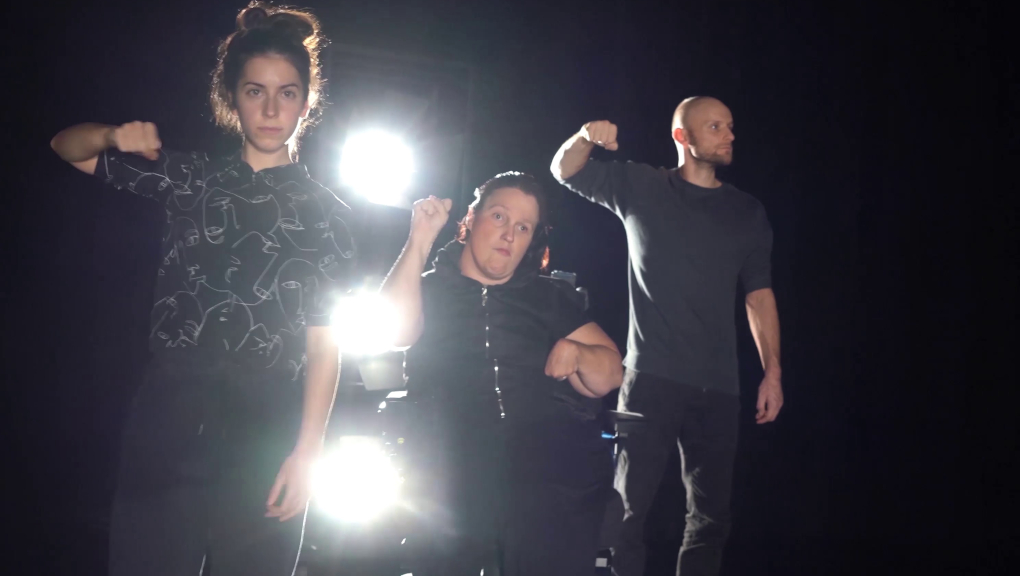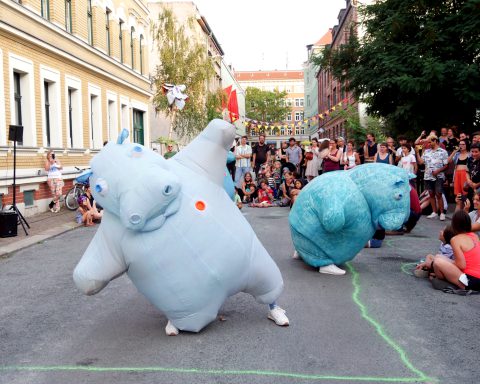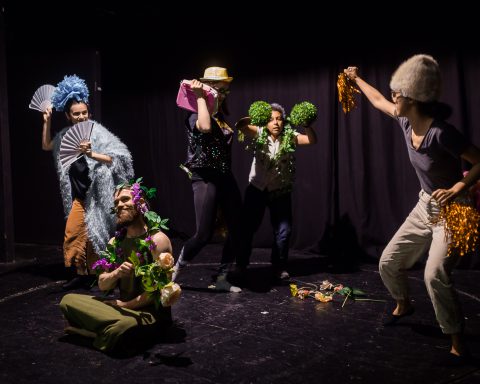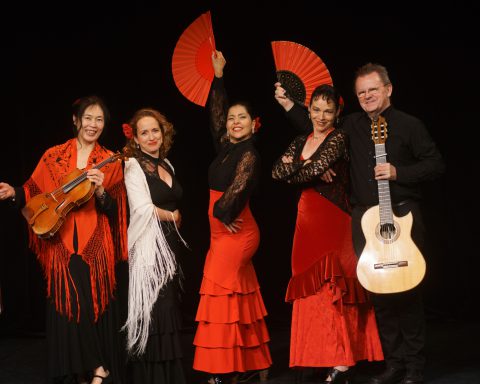As Leipzig opened up after its Covid-induced cultural drought, Tanzlabor was working on a cure to lockdown isolation. On the weekend of 4 March, the city of Leipzig introduced its long-anticipated relaxing of restrictions. Admission to events stepped down to the 3G regulation. Requiring visitors to (only!) prove that they are vaccinated, recently recovered, or have recently tested negative for Covid-19. Nowhere was the sigh of relief more resonant than in the arts sector, where theatres finally reopened their doors after a 16-week hiatus.
Could it be that we are nearing the end of our long, dark, infectious tunnel?
With a 7-day incidence of 435.5, the city of Leipzig is statistically safer today than it was when the theatres closed last November. Leaving us no longer in mortal danger when stepping into a performance venue. Dare we now dream of a world free of the recurring disappointment of canceled shows? Or is there still, in the recesses of our traumatized minds, the fear of theatre closures when summer draws to a close?
I remember having the spring abruptly taken out of my step in late November last year.
My tickets to Tanzlabor’s latest contemporary dance work, Klare Kante (Clear Boundaries), were canceled by way of the following email:
Liebes Publikum,
Aufgrund der hohen Infektionszahlen von COVID-19 müssen wir leider den Spielbetrieb bis zum 12. Dezember 2021 einstellen. Die Infektionszahlen sind so hoch wie nie.
Dementsprechend fällt auch leider die Veranstaltung KLARE II KANTE aus, für die ihr Tickets reserviert habt. Wir hoffen, dass wir ganz bald wieder für euch öffnen können. In Kürze informieren wir euch über eventuelle Alternativformate.
Passt auf euch auf!
The Leipzig-based contemporary dance company, Tanzlabor (Dance Laboratory) has been facilitating cultural participation in contemporary dance for over 15 years. They cater to both able-bodied people and those experiencing physical disabilities. I spoke to Marlen Schumann, the choreographer of Klare Kante, Katja Mieder, one of its principal dancers, and Marion Müller, head of Tanzlabor.

We talked about the show, its ups and downs, and its protracted and laborious birth.
Marlen completed her studies in contemporary dance and choreography in the Netherlands and also received dance education in Dresden and Leipzig. She joined the company as a dancer during their 2009 inaugural production, You Can Touch This. As a choreographer, Marlen began developing the concept for Klare Kante in September 2020, with rehearsals beginning in October of that year.
“We worked on it until the middle of November 2021, but due to Corona we had to stop time and time again,” she tells me. “Sometimes it’s good to have some extra time,” she admits. “We have been able to rework the piece on a deeper level because of the extra time that we had. This is, of course, different from when you only have 3 months to complete a work. That was nice. But now, after more than a year of work, it has been a relief to finally perform the show. It’s time now, we are ready”.
As Marlen contemplated the dancers she wanted to use, her interest was drawn to Katja and how she performs with her large electric wheelchair. Here Marlen had the opportunity to “counteract massive with delicate” she tells me. Katja was introduced to contemporary dance while attending the socio-cultural center for youth, The Villa, in Leipzig. Upon invitation, she began volunteering for Tanzlabor, which is based at The Villa. She has since completed her dance teacher training and now works for them as a contemporary dance teacher and dancer.
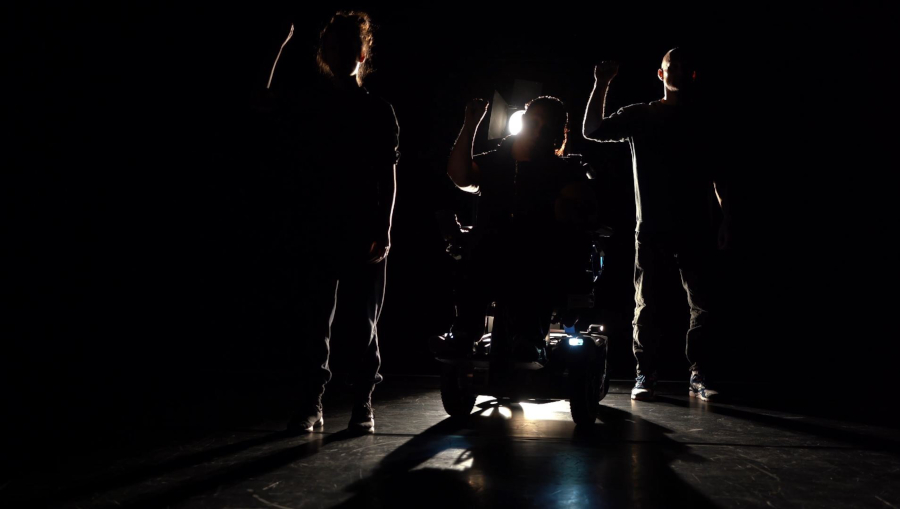
Tanzlabor doesn’t only produce sell-out shows.
In addition, they provide workshops, regular open dance events, and professional training to become a qualified dance teacher. There are currently training 12 dancers, although some have fallen away due to the irregularity caused by the pandemic. Graduates do not necessarily have to invest their newfound skills back into Tanzlabor. Instead, they are encouraged to go ahead and do their own thing. Those who choose to continue at Tanzlabor are welcomed.
When asked about the requirements for the dance training, Marion of Tanzlabor tells me, “There are only two requirements: interest, and patience. Five hours a day is not for everyone, and many can’t manage it, especially when they are dealing with the challenges of a physical handicap. Having said that, we have never excluded anyone because they need things explained in more simplified language or because they have a physical disability.”
The open dance sessions take place every two weeks.
“It’s not a workshop. Rather, it is an open rehearsal for those with or without handicap who wish to experience contemporary dance and see what they can do with it,” Marion says. People with and without prior knowledge of contemporary dance can take part. “It is also there to be enjoyed by the community. It fulfills many purposes.”
These open dance sessions require no registration. And despite being run by professional dancers, they are free. “Last year it was running via Zoom. Some people find this too arduous, or that they get too little out of it,” Marion admits. She confesses that she, herself, found it hard to get into dancing online. Until she solved the problem by sometimes turning her camera off. But now, the sessions are in person again at The Villa, which is a relief to many. “Through the pandemic, we had the possibility to cover a lot of things via Zoom. But when you present open dance in person you experience it completely differently than you do over Zoom,” Marion explains.
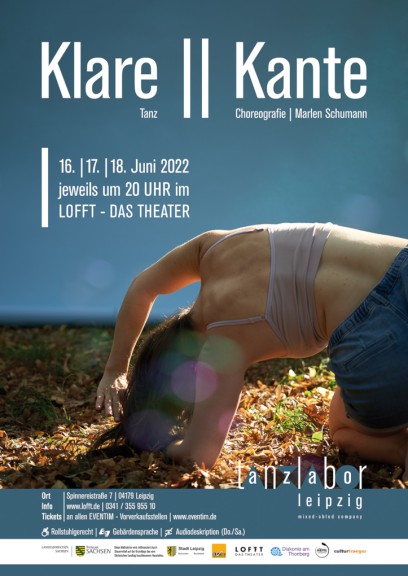
Katja concurs, “Physical improvisation is something so amazing in contemporary dance. I have always enjoyed it so long as we were allowed to do it. But since I heard that we need to keep a distance of 1.5 meters, it took me a long time to comprehend it in my head.”
Being able to re-open and move things from Zoom back into the real world is clearly a relief.
But I am curious whether this online period may have opened new avenues for extending production possibilities beyond four theatre walls. I wonder how a dance performance such as Klare Kante would come across to the public if they were a static audience in front of a computer screen.
“We considered carrying out the performance through a live stream online if there was no other way to perform it,” Marlen confesses. “I could imagine doing it that way, but the problem is that dance is the completely wrong artform for this type of presentation. Through the streaming, we lose so much of what the art form is that it no longer represents dance. It is only an attempt to communicate it. And it depends heavily on the end device the viewer has. What sound quality they are hearing, what kind of lighting, image settings, color, etcetera, they have. That is the problem for me, it is a live art form.”
Let’s face it: when stages close and artists’ livelihoods are threatened, the public is the biggest loser. The lifting of restrictions meant that KLARE || KANTE was able to premiere live and in person on 16 June 2022 at LOFFT Theatre.
You can find more information on the Tanzlabor website.

